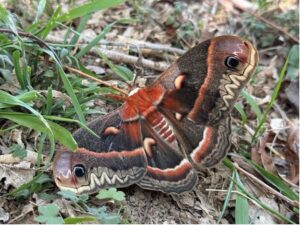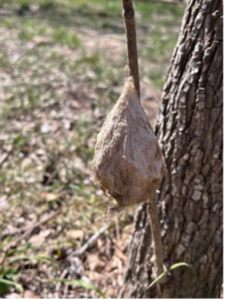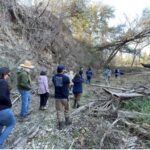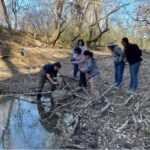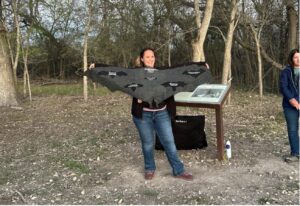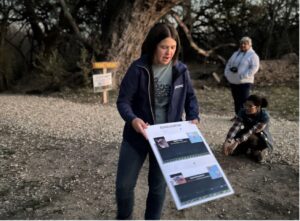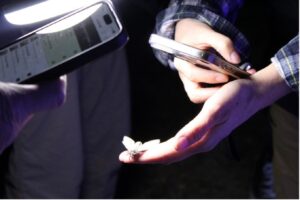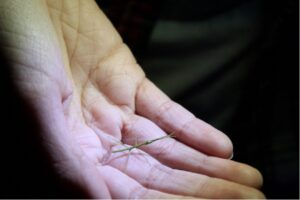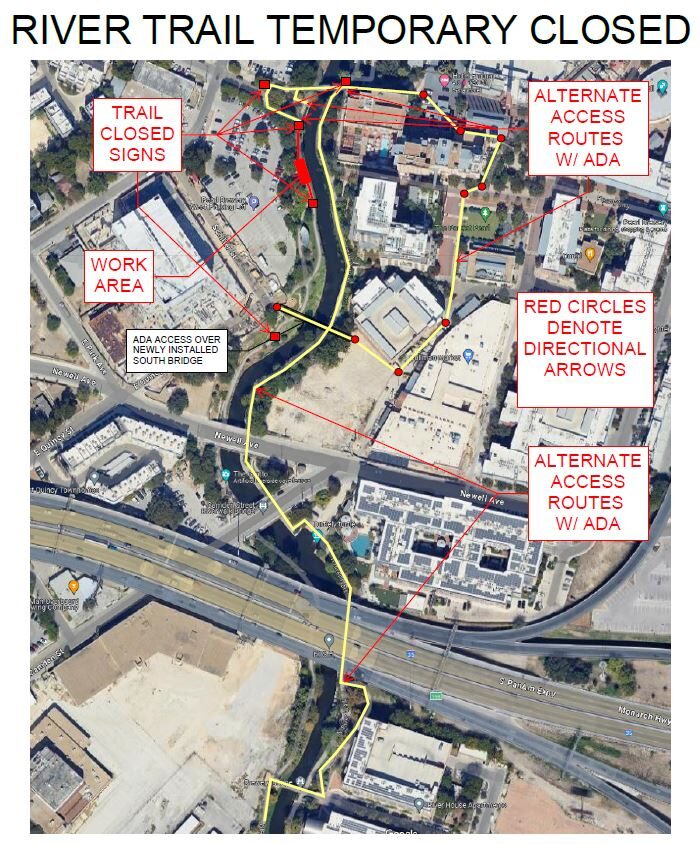What do lizards, moth cocoons, heritage trees, bats, and raccoon prints have in common?
They were all observed during the San Antonio River Basin Bioblitz this year at Hendrick Arnold Nature Park!
From March 20–22, 2025, scientists, experts, and partners of the San Antonio River Authority (River Authority) enjoyed three fun-filled days at one of our newest parks on San Antonio’s far west side. From exploring soils and discussing drought impacts to detecting bats and observing trees and butterflies, there was a lot of nature to discover!
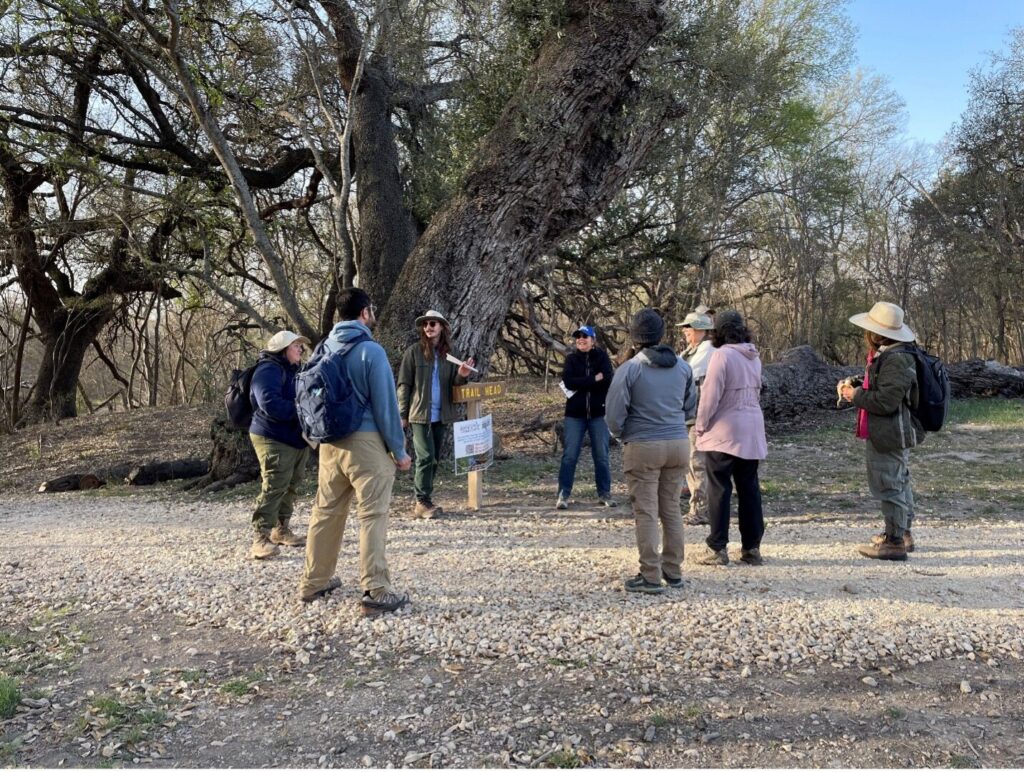
Our friends from Bexar Audubon Society were up and running before the sun on Thursday March 20 and Friday March 21 to catch a glimpse of the early birds! There were over 30 species of birds found in the park over the two mornings, including interesting finds like the Northern Parula, Spotted Towhee, and the Yellow-throated Vireo.
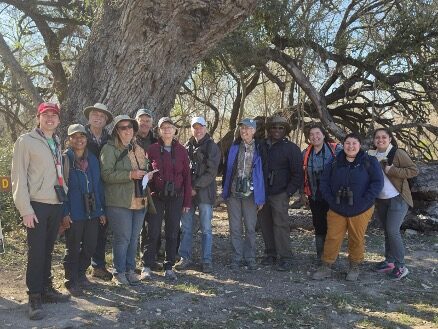
Local butterfly expert Martin Reid took participants on a walk through the park to identify over 20 species of butterflies! Interesting finds included Mourning Cloaks, Falcate Orangetips, and four species of crescent butterflies.
An adult Cecropia Moth (the largest native moth in North America) as well as some cocoons were exciting finds during the BioBlitz!
Texas Parks and Wildlife Department (TPWD) joined forces with the River Authority for a herpetology survey and together found amphibians and reptiles like the Spiny Softshell Turtle, Blanchard’s Cricket Frogs, and Brown Anoles!
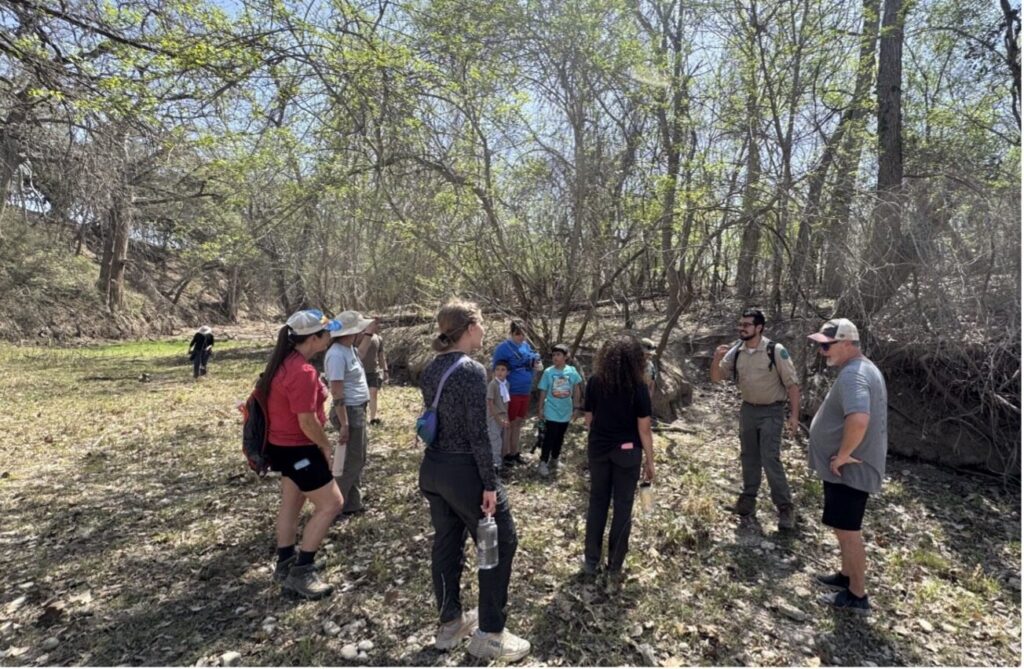
Dozens of different plants abounded, especially near the Medina River! Keeping the heritage-sized oak trees company were interesting vegetation like Osage Orange Tree, milkweed vines, American Germander, and Buttonbush.

Buttonbush (Cephalanthus occidentalis) Photo Credit: Peter Hernandez
While we relish scientific data collection, we had some very fun and informative walks in the park too! The “Dry Creek Discovery” was led by some of the River Authority’s aquatic biologists, who showcased the effects of drought and water consumption. While the Medina River in this area was dry, there were still many wonders to behold in discovering the water-filled nooks and crannies that provided habitat for fish. A mesmerizing pool of water was still providing refuge for fish, including green sunfish, bluegill, and mosquitofish, which all turned up in a quick electroshocking demonstration!
A River Authority biologist took a group and dug into the fascinating world of soils! Despite ongoing drought, the soils beneath our feet reveal a deeper story of historic wetlands. While it may not look like a typical wetland now, the soils and plant communities are quietly telling a story.
To usher in the next generation of nature explorers and carers, we hosted a time just for our junior river warriors! Skins, skulls, and raccoon prints were on full display for kids of all ages.
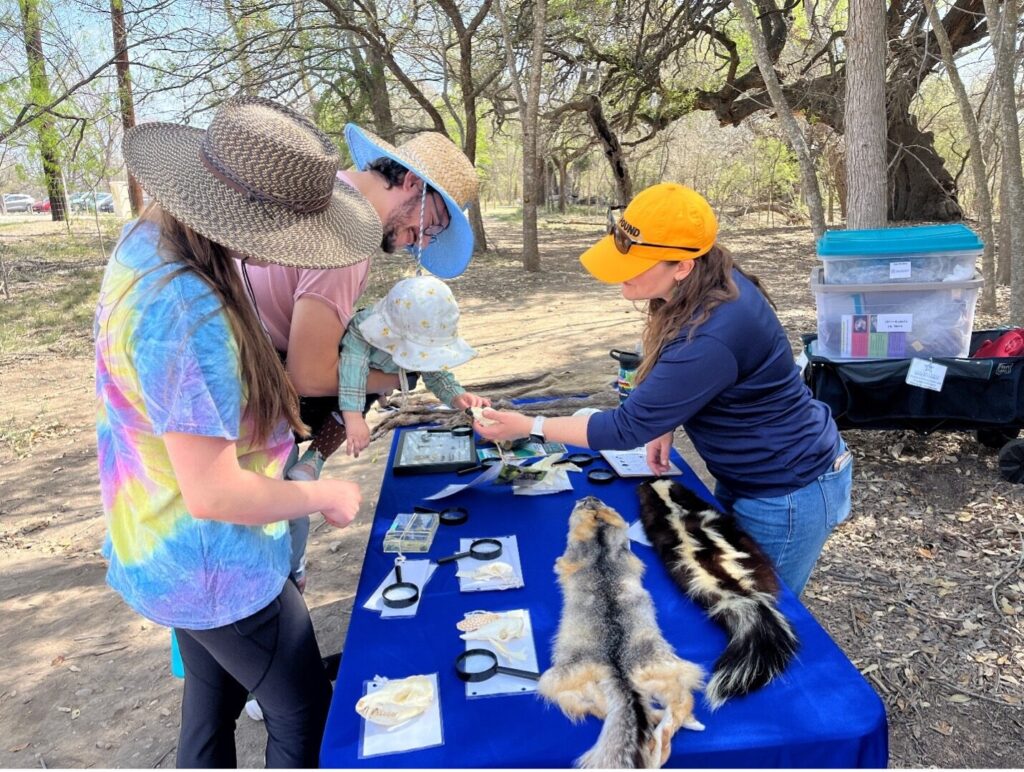
There was also a great turnout for our nighttime activities—when nocturnal animals are in their prime! Bat Conservation International (BCI) taught us about the diversity and importance of bats and led us on a walk to use detecting equipment to pick up bat echolocation signatures.
Once the sun was fully tucked away below the horizon, we turned our attention to see what insects and other critters by the special light setups supplied by Master Naturalist Peter Hernandez and fellow volunteers. There were many types of insects seen, such as moths, stick insects, and small flies!
A couple of lucky participants got firsthand experience with our trail cameras, which we use to survey wildlife that often elude us and are usually more active at night. Not only were our usual suspects like coyotes, raccoons, and opossums seen, but we also had a special sighting of a Ringtail and night participants got to hear the sounds of a Barred Owl.
All in all, we greatly enjoyed having our community show up to revel in the biodiversity of our newest nature park and work with so many fellow scientist partners! We look forward to exploring another River Authority park with everyone next year—catch you in the Basin!


